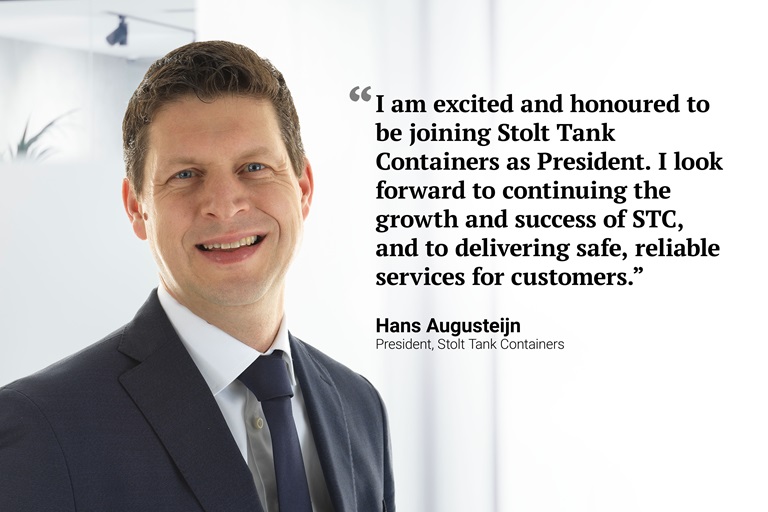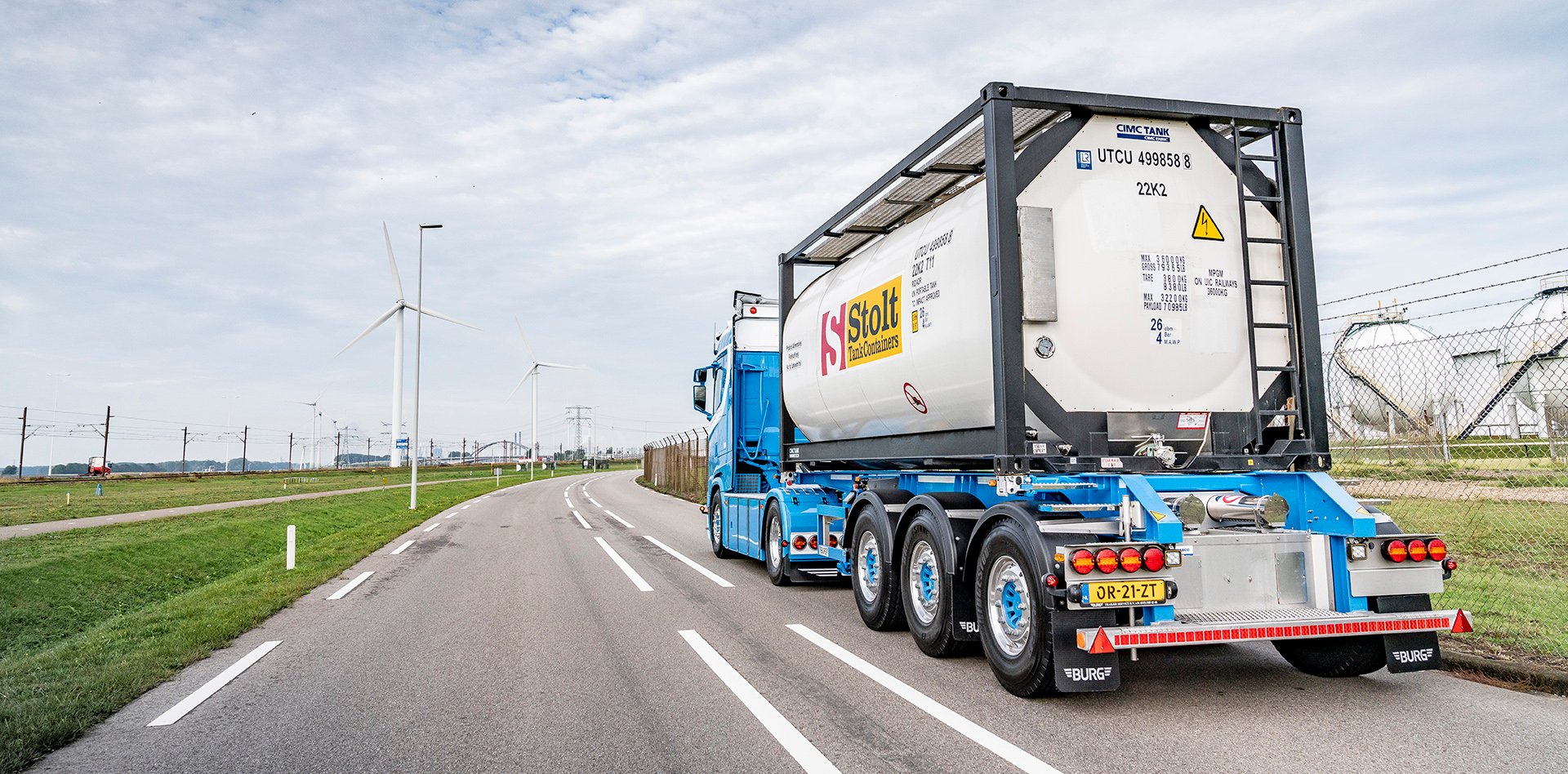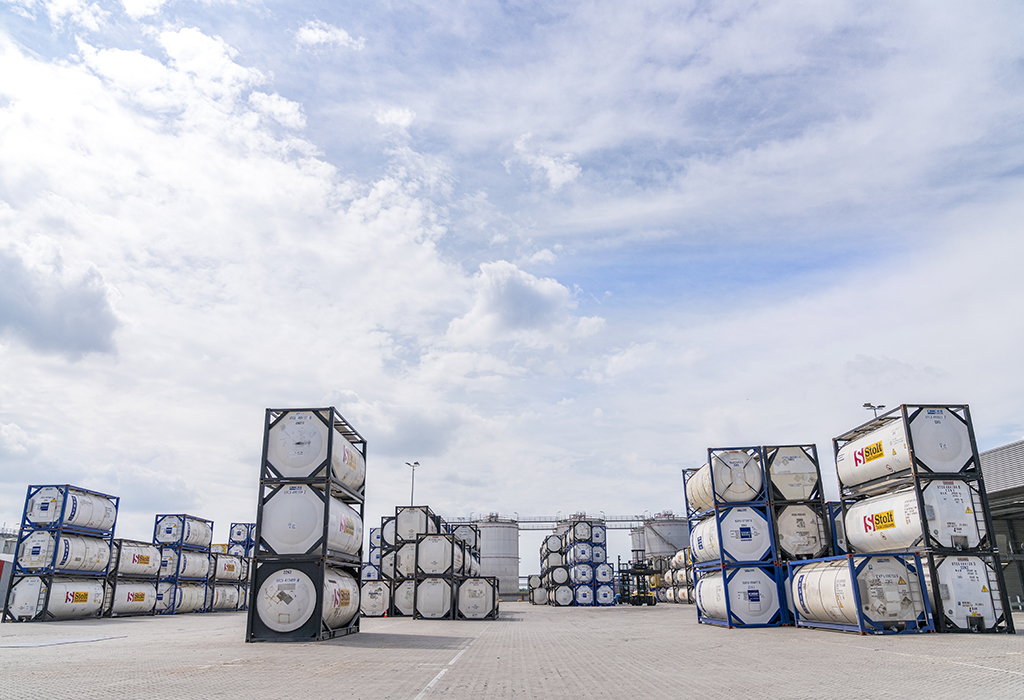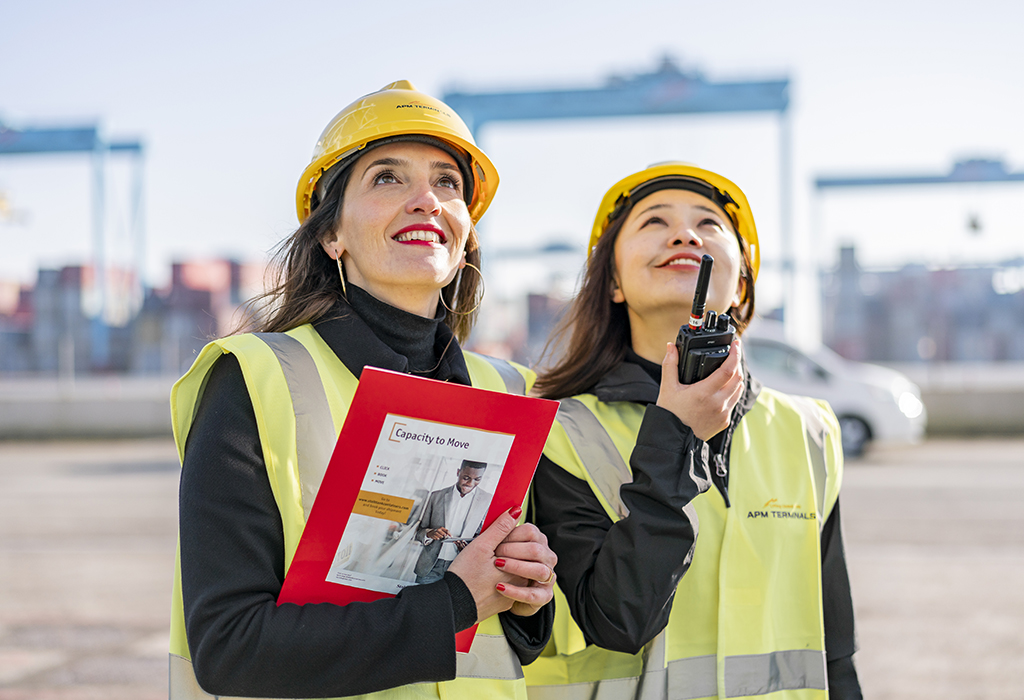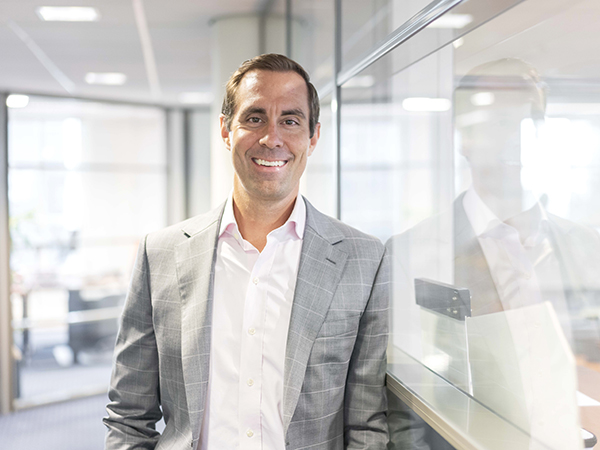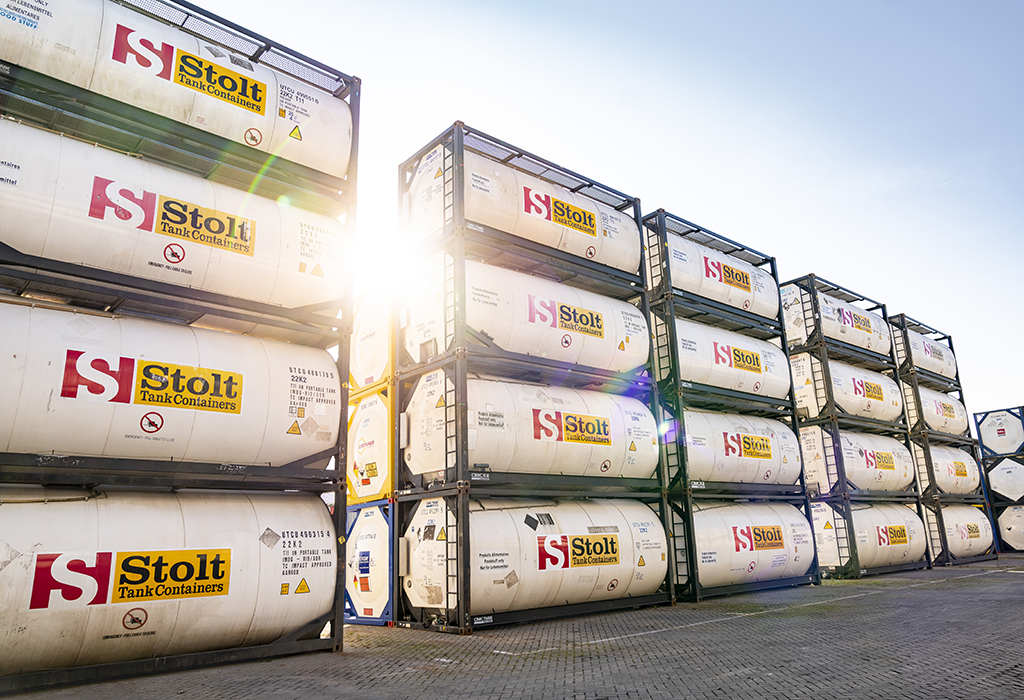Stolt Tank Containers gives an interview to Bulk Distributor magazine
As the largest tank container operator, Stolt Tank Containers (STC) has a unique perspective on how the global Covid-19 pandemic has impacted the industry. With a fleet of more than 40,000 tanks and 22 cleaning and repair depots, STC operates on all continents.
Bulk Distributor spoke to some of STC’s regional directors to ask how the pandemic has affected business in different regions and what might or might not change once the world returns to something approaching normal circumstances.
The directors contacted were: Greg Vinson (Asia), Laurent Grandjean (Europe), Brandon O’Brien (Americas), Ian Harvey (Middle East/Africa), and marketing director Mark Bertens.
BD. What has been the impact so far of the pandemic in terms of demand for tank transport?
Greg Vinson – Asia. At the outset of the pandemic, customer reaction was limited. There were the obvious spikes in demand connected with products for sanitisers, but little change early on in many industries, with hope that the virus would subside or be limited geographically. There was also the perpetual motion of the supply chain that seemed to be unaffected for quite some time, with demand fall-off only evident once product stacked up at destinations. At the same time with producers being different than consumers, plants continued to run and build export stocks as buyers forecasts were slow to be adjusted. Cargo had to move and in many cases it did, just to go into storage at destination. Industries already under pressure remained so, with cashflow taking on even greater importance. When the pandemic expanded beyond China first to Europe and SE Asia, there was a net positive effect for STC as our very strong business technologies framework allowed us to transition our business activities seamlessly from home to office, while maintaining high levels of service and reliability that customers clearly valued and welcomed. As a result we have seen some new customers who are concerned about their supplier’s ability to serve, rely heavily on STC.Laurent Grandjean – Europe. Demand shrank significantly in May and June. However, it now seems to be bouncing back.
Brandon O’Brien –Americas. There was a wait and see sentiment when this all began in China, but quickly became a concern for customers once there were Covid outbreaks in Europe, followed by the US. With our customers and their products often heavily involved in keeping large plants operational, there was a long lag before we felt the impacts. As the slowdown began, the slack was picked up by sanitising and cleaning based chemicals. Once containerised trade was clearly impacted, the ocean carriers’ ability to control capacity led to many customers turning to reliable and sustainable suppliers like STC.
Ian Harvey – Middle East/Africa. In the Middle East and Africa we saw a downturn in business, especially in the second quarter as Europe started to be hit hard by the virus, and businesses were either shut or manufacturing was scaled back. The fact that the markets to which we were shipping were affected at different times, rather than all at once, helped mitigate the slowdown. The deficit in shipments was driven not only by the severity of the pandemic in certain areas, but also the fear of the unknown as to what the near future might be in terms of supply and demand of the products we move. Many of the large chemical producers continued to produce with little or no disruption, and luckily due to robust systems, procedures and a seamless transition from office to home, our offices in the region were able to handle all customer requests and operations without any disruption. This was noticed and highly commended by customers, in many instances.
How has demand impact played out in particular regions?
Greg Vinson. There has been a flight to quality in Asia. Significantly, this was first due to our ability to continue operating without interruption as Covid-19 moved around the globe. In this respect,
we believe that customers found challenges with some competitors and shifted their business to STC. In other cases, we believe that customers, fresh off the Hanjin bankruptcy a few years ago, simply wanted to be sure that their cargo was in tanks and under the control of a financially strong company. One important element in our favour was that we knew all the time what our network of depots could do, how the people were reacting and what was possible to promise customers when so many other operators could not get their tanks cleaned. Aggregate demand has not increased. We have successfully converted cargo from flexitanks and built on already strong customer relationships to grow volume further. India has suffered greatly as a country during the lockdown, probably much more than is fully known. With so many factories employing workers from distant states, restarting production has been painfully difficult and keeping them going just as difficult. With credit tightening and the government mandate of full payment to staff during non-revenue shutdown, it has really impacted some companies’ viability.
Brandon O’Brien. With direct reference to South America, STC’s growth and strategy changes there began in mid-2019, and so started well before the onset of Covid-19. That momentum carried us into the pandemic period and positioned us to capitalise on the increased customer demand for sanitisers. With STC being respected and having a local network in Latin America, customers looked to us for quality and reliability in supporting them in these difficult times. Unlike North America, South America faced far more hurdles in governmental involvement directly impacting the movement of goods within their jurisdiction. In North America, we shifted focus and saw a very strong start to 2020 prior to the pandemic. Demand has remained buoyant, but with different product mix.
Ian Harvey. So far, the pandemic has had limited negative effect on the Middle East, as we saw chemical plants continue to produce with little disruption to output, and the staggered effect of markets opening and closing helped keep products moving. However, one of the biggest effects on the Middle East was the closure of the Indian market.
What about shipments traversing two or more regions, eg, Asia-Europe, Asia-America, North-South?
Greg Vinson. The big challenge on these lanes was the large number of blank sailings put in by the shipping lines as they were faced with plummeting demand for space and responded by cutting back dramatically on capacity. This extended customers’ supply chains, reducing the speed and flexibility of their solutions. In many ports, national authorities put in unilateral berthing delay structures, in some cases requiring ships to have a minimum of 14 days between their last port and their next one.Brandon O’Brien. Carriers and governments were the two biggest challenges on international trade lanes. Carriers learned early when Covid-19 hit China right before Chinese New Year that their ability to control capacity was extremely lucrative in an otherwise terrible demand market. Additionally, governments had changing guidelines as cases increased from specific countries and information on the virus became available. The early impacts on the international logistics chain were there, yet customers were looking to us to support them. Our systems in place allowed us to work seamlessly between our geographical locations, as well as being efficient moving from in the office one day to fully remote the next.
Has the pandemic had unexpected positive consequences for certain shipments?
Greg Vinson. In essence, the strong can get stronger, if they take the advantage to do so. And the weaker are vulnerable and are much more likely to be culled from the pack. On the chemicals side, really ethanol and isopropanol producers are the two biggest benefactors.
Laurent Grandjean. We have seen an increase in sanitiser ingredients coming into Europe.
Brandon O’Brien. Chemicals used for sanitising and cleaning will see increased demand even after Covid, but no one knows to what extent.
Ian Harvey. Where we have seen land borders closed, this has allowed us more short-sea movements and more local distribution opportunities, as well as short term storage for chemical plants that need to keep production going. Some additional deep-sea loads have also been secured, especially for ethanol.
What has been the impact on fleet utilisation rates?
Greg Vinson. Positive for STC at the start, but this also has had a coincident connection to some of our structural fleet strategies.
Laurent Grandjean. Utilisation dropped although not to levels first expected as a portion of the fleet was sitting in plant storage or awaiting delivery.
Brandon O’Brien. With a backed-up supply chain at customer facilities, we have seen an increase in utilisation and customers holding onto equipment longer.
Ian Harvey. It’s had a positive effect on utilisation, in that tanks have been kept by receivers (and shippers) for longer, which has helped utilisation.
What do you see as the most likely long-term consequences of the pandemic for the tank container markets?
Greg Vinson. Leasing companies will have been burned by small operators and freight forwarders, and will be somewhat risk averse going forward. Lower demand means that there will be fewer new tanks purchased and the number of builders will reduce through closure. With many companies failing, there will be a smaller range of retail products available for consumers, with a resulting reduction in demand of some specialty products. There will be reduction in drums and small packages as contact spread of the virus will incentivise bulk and fewer handling of any such items. Reduced air travel will impact demand of many products. More stay at home activities will increase demand for electronics, and their chemicals, etc. The bottom line is that there will be fewer tank container operators as customers fly to the safety of solid companies.
Laurent Grandjean. This depends on how quickly a vaccine can be found and deployed. Should the threat remain for several years then some markets will be structurally disrupted, such as chemicals used in the mobility sector, plastics lubricants and additives for cars. Depressed economies and the subsequent job losses will reduce demand overall despite government emergency plans to support consumption.
Brandon O’Brien. Customers will be looking to secure their supply chains for the future. This could mean holding additional inventory and being more diligent on the financial stability of their suppliers and customers. As companies struggle with cash flow, the impacts of that will be remembered after this storm.
Ian Harvey. The biggest concern here is how economies will be affected by the pandemic, and whether we will have a global recession. Massive industries such as airlines or automotive have taken a huge hit and this will have an effect on our business, especially the auto industries. It would stand to reason that a vaccine would help, however, that will take over a year for all countries to get supply, and then there is the apparent lack of full understanding of the virus itself, and how it works.
Might it speed consolidation in the operator and/or leasing sectors?
Greg Vinson. Capital remains so cheap that consolidation of leasing will only happen for companies in the most dire of circumstances. Even then, these companies could be hived off at 50 cents on the dollar and survive. Fundamentally, acquisition is valueless without physical assets of the purchased company. There is no structure in which a buyer of a company of leased-in tanks is worth paying anything to acquire. Second, with capital conservation, it will be more difficult to find operators with the cash and the confidence to part with it for an acquisition. This is going to be one big circling of vultures to take advantage where the chance comes…at all levels.
Laurent Grandjean. I don’t think so,although some may not be able to last over a two year depressed cycle.
Ian Harvey. I expect to see small, inexperienced, regional players begin to fail as customers seek quality, reliability and financial strength. There is still a glut of tanks around the world, and I don’t see opportunities to buy or consolidate with smaller operators, as most of their equipment is leased, and we are mostly serving the same customers. Leasing companies would probably be hurt the most in such a scenario. They have already been consolidating prior to the pandemic, and don’t see much possibility for more consolidation at this time.
Could it also mean more transports over shorter distances as supply chains become shorter?
Greg Vinson. Covid doesn’t really drive that. Reduced consumption and supply means that more product will have to go farther to find a home. If you loop in the USA/China trade war as a separate subject, perhaps there is something to this….but I don’t really see supply chains getting shorter….and with fewer vessel options, etc….I expect they will be slower anyway.
Laurent Grandjean. Government might (perhaps should) ask to reshore some supply chains for medical ingredients.
Brandon O’Brien. There has been discussion on near-shoring supply chains for years prior to Covid. I don’t think the pandemic will change these decisions. During the lockdowns, customers saw that logistics chains were reliable. The bottlenecks and issues were more domestic, thus shorter supply chains would not have helped.
Ian Harvey. Shortening supply chain routes will take time, and this is something that was being discussed, even before the pandemic, more so because of the trade war between the US and China. This is not something that will happen overnight as it will take many years, except in possible areas of national importance, eg, pharmaceuticals.
It has been reported that certain shortages in dry freight containers had given a boost to converting some cargoes away from flexitanks back to tank containers. Is this likely to continue, or is it more a temporary phenomenon?
Greg Vinson. I don’t think there is a shortage of boxes. With global trade being depressed there are more boxes available than there were before, unless they are sitting full of cargo, not moving. There could be some conversion due to supply, but I think it is more due to concerted pushes for sustainability, and the rebellion against single use plastics, and tank containers being competitively priced.
Brandon O’Brien. In the early days of the pandemic there was some back up of containers at ports and importers were having difficulty moving boxes inland. If there was any cargo transition as a result of this, it will not be continuous. Cargo transition happens when customers make the choice to use a more sustainable mode of transport.
Ian Harvey. We have seen this to a certain degree, which we believe is a result of these containers being returned empty more slowly (and so unavailable), due to the pandemic and uncertainty surrounding it. I think that a different trend will, in time, affect flexitank use more…sustainability and environmental awareness, especially for those importing and exporting from Europe.
What investment do you envisage in terms of fleet additions, modernisations, etc?
Greg Vinson. We will grow organically and add to our fleet. We will continue to invest in business technology and improving the efficiency our depots for faster processing and more services. There are a few companies worth acquiring, but every buyer needs a seller and a pitch worth considering.
Laurent Grandjean. This crisis has proven that our digitisation journey that we embarked upon several years ago was the right one, and has brought immediate benefit when we could turn homes into offices without any service impact. More efficient work organisation and process is going to be deployed by using lessons learned from this crisis.
Brandon O’Brien. Our investments will continue to be in technology and digitising our business for the future. We will focus our resources on further integrating with our customers and providing services they value.
Driving digital change What investments has STC made in its digital strategy
recently?
Mark Bertens, marketing director. Over the past couple of years we have invested heavily in digital connectivity options for both customers and suppliers. Examples of these investments are our
Track & Trace service on our upgraded website, the industry’s first Supplier Portal, the ability for customers to book digitally with STC via well-known supply chain platforms like INTTRA and InforNexus, but also in a new pricing and quoting platform. An upgraded version of our mySTCtanks online customer portal is currently being developed and will be launched at a later stage. Further innovations are in the pipeline.
What benefits do these investments bring to your customers?
Mark Bertens. The starting point for all our digitisation efforts is that any investment we make must make it easier and faster for our customers to do business with STC, and offer them a true competitive advantage through higher efficiency and lower cost.We do so by providing customers and suppliers with improved information flows and real-time updates, and by offering them
a choice of various easy-to-use tools and platforms. Furthermore, digitisation of customer transactions and touchpoints not only reduces the risk of errors, it also allows our people to deal better with exceptions, and give our customers the personal touch that they appreciate.
Has the pandemic boosted customer interest in and uptake of digitisation?
Mark Bertens. Absolutely! Ever since the pandemic started to spread at the beginning of the year, and more and more customers started to operate from their home offices, we have seen a sharp rise in the number of customers and suppliers wanting to connect and transact with us digitally, either directly or via one of our third party platform options. At the same time we have noticed an increase in the usage of our online Track & Trace service, as well as overall website visits as customers are, more than ever, looking for up-to-date information. It is safe to say that the pandemic has accelerated digitisation, and it reaffirms the importance of our ongoing digitisation efforts and investments.
